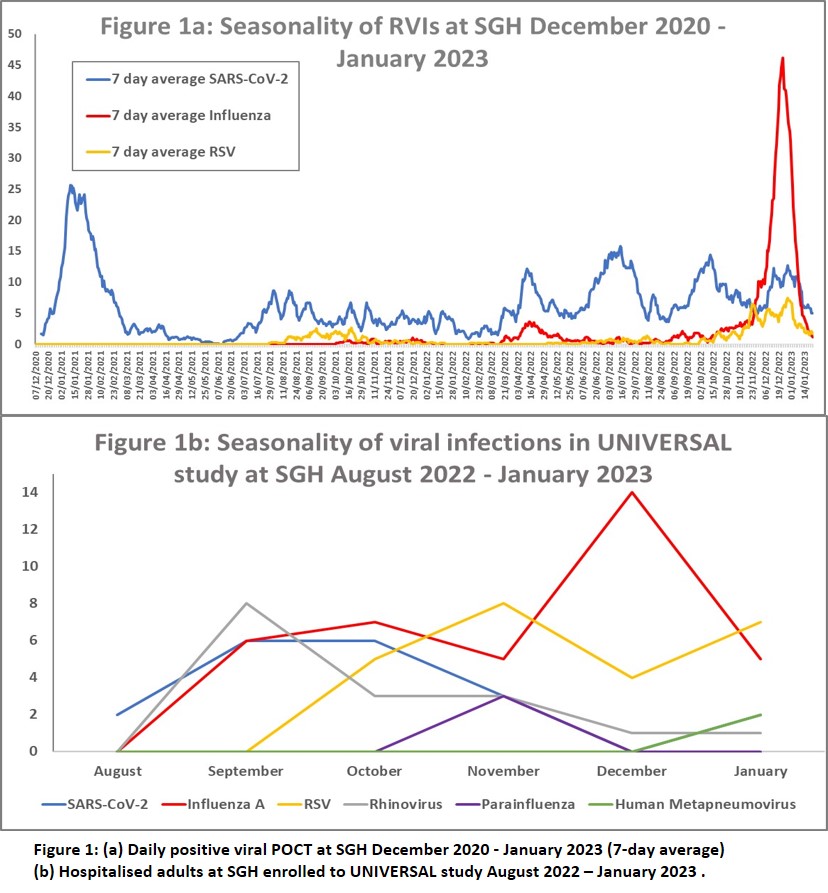Abstract
Background:
Seasonal patterns in RVIs are well known and peak incidences rarely overlap. These patterns have been disrupted by the emergence of SARS-CoV-2 and social distancing measures. Relaxation of infection control interventions has coincided with a re-emergence of RVIs, albeit with shifts in typical seasonal patterns.
Aims:
o Illustrate the pandemic impact on seasonality of RVIs from 2020-2023.
o Demonstrate re-emergence of RVIs and disruption of viral seasonality.
Methods:
Data was obtained from viral PCR point-of-care testing (POCT) in hospital admissions at Southampton General Hospital (SGH). The UNIVERSAL study is a prospective observational cohort study of adults hospitalised with RVIs and provided data on admissions with RVIs from August 2022 to January 2023.
Results:
POCT data demonstrated reductions in RVIs during winter 2020-2021 and 2021-2022 compared with historical norms. Influenza A activity re-emerged in 2022-2023, with a peak incidence in December, overlapping with an RSV surge. Seasonality for both viruses was shifted to earlier in the year compared with pre-pandemic years. Preliminary UNIVERSAL data demonstrates adult hospitalisations with a range of RVIs.
Conclusion:
We demonstrate the pandemic impact on RVIs and re-emergence of circulating RVIs. In the wake of the pandemic, seasonality trends are difficult to predict. These evolving trends have implications in acute care planning and vaccination schedules.
